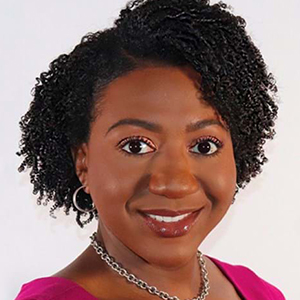

The Influencer is in the House
Paying influencers to reach Gen Z can work, but many brands find it more beneficial to cultivate influencers from within.
Each year, brands pay social-media influencers billions of dollars to connect with younger audiences. This year alone, companies will spend an estimated $3 billion.
They have good reason. Gen Z — those born between 1997 and 2012—get more of their news from social media than any other source, and the messenger is most commonly an influencer or public figure. Instagram and TikTok stars not only raise brand awareness, they also tell Gen Z which brands are aligned with their priorities.
That matters because WE Communications’ 2021 Brands in Motion report finds that 70% of Gen Z respondents are more likely to purchase products or services from brands that are leaders on the societal issues important to them.
But hiring influencers also carries risks, as these free agents may not always speak or act in accordance with a brand’s values, and 85% of consumer packaged goods businesses report seeing a negative effect of influencer association.
Brands that develop their own influencer talent have a distinct advantage. In WE’s Brands in Motion survey, Gen Z placed more value on communication from senior leadership more than any other generation. When asked to rate the influence of senior leadership on their decision to support a brand on a scale of 1 to 5, 62% rated the impact at 4 or 5, the highest percentage of any generation. Gen Z also expects more frequent communication from senior leaders than older generations.
The CEO Effect
Brands with CEOs or C-suite officers who take bold, brave stances are very popular with this generation. Here are some Gen Z favorites:
Dan Price, CEO Gravity Payments. In 2015, Price raised the minimum salary at his company to $70,000 and cut his own pay by $1 million. He immediately developed a huge following and speaks out regularly on income inequality and workers’ rights to his 639K Twitter and 238K Instagram followers. Since 2015, Gravity’s revenues have tripled. A recent popular post among Gen Z: “Dick’s burgers in Seattle just upped its minimum wage to $19. It gives workers free health care, 3 weeks paid vacation, 50% 401(k) match and $9,000 for tuition/childcare. Its basic burger costs $1.80. But I was told that paying people a living wage would make burgers cost $20?”
Indra Nooyi, former CEO of PepsiCo. With 1.2 million LinkedIn followers, Nooyi posts personal reflections about her life as the first woman of color and immigrant to run a Fortune 50 Company (and has recently published a book on the topic). She shares childhood photos and her views of how society needs to move forward. A recent popular post: “I approach the issue of care not just as a feminist, but as an economist. We need the best and the brightest talent to progress our economy—and that means enabling women and family builders to succeed.”
Bozoma Saint John, Chief Marketing Officer at Netflix. With 381K Instagram followers, Saint John shares everything from her red-carpet looks to her Sunday prayers. She was recently named to Forbes’ World’s Most Influential CMO 2021 list. “People now say, sometimes you just need to be humble. Who? What? Why? Why should I be humble? I’m great. And I have worked for this. I have eaten the buttered role at [brand] Pizza standing on the corner holding a pay phone. I earned every single minute of this, and I will celebrate it and I’m unapologetic about I won’t stop ever,” she said on the Kenny Burns podcast.
Cultivating In-House Influencers
Let’s face it, not every CEO can—or should—make a TikTok. That’s why many brands are developing their own in-house talent for platforms.
The Washington Post. Gen Z still consumes information from legacy outlets like the Washington Post or the New York Times. But the information comes to them via their social media feeds, after influencers post them. The Washington Post cut out the middleman by developing its own influencer talent, who create hilarious TikTok explainers on everything from vaccine information to the labor movement to carbon emissions.
Peloton. The audition process for this fitness cycle company’s online trainers is as fierce as any Hollywood film, and star quality is just as important as fitness credentials. That’s why many Peloton trainers like Robyn Arzon and Ally Love are now their own brands, and Peloton has been dubbed “The Netflix of Wellness.” Peloton seeks out talent and develops stars while maintaining a unified vision under the umbrella of the brand.
Mixing Old and New
To reach Gen Z, brands don’t need to throw out their entire public relations strategy. Press releases still work, and younger people may well catch that television interview with the CEO—via the YouTube clip in their Instagram feed. But as Gen Z comes into purchasing power, brands need to adopt an influencer mindset and develop a comprehensive social media strategy across the company and platforms—what works for LinkedIn won’t necessarily work for TikTok. That strategy should no longer be a side project relegated to interns—though these young employees should be your key consultants!
The latest blogs from WE
Pride is Democracy
Overcoming the Lack of Diversity in Clinical Trials
Is Corporate Purpose Still Relevant in 2024?
